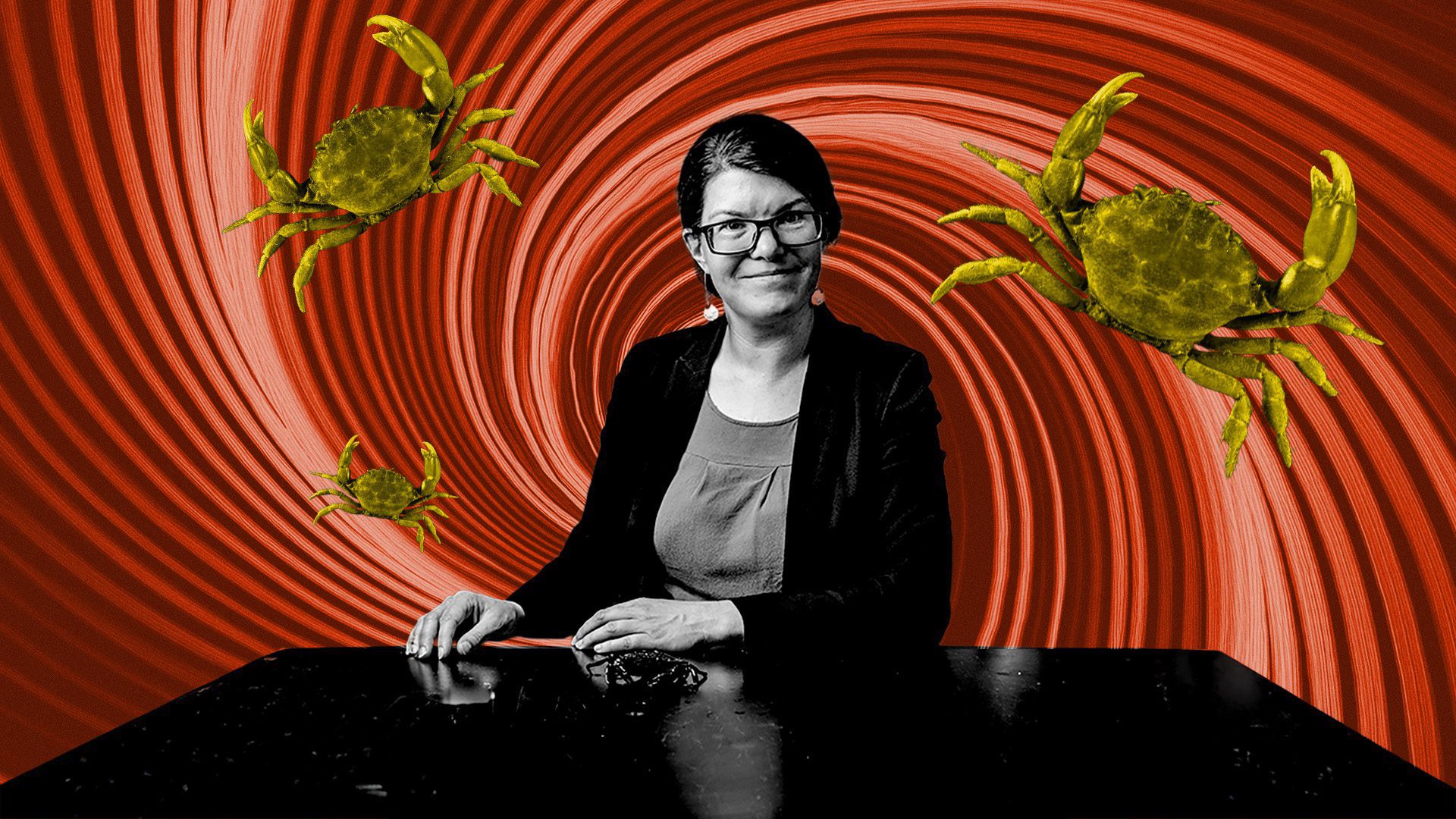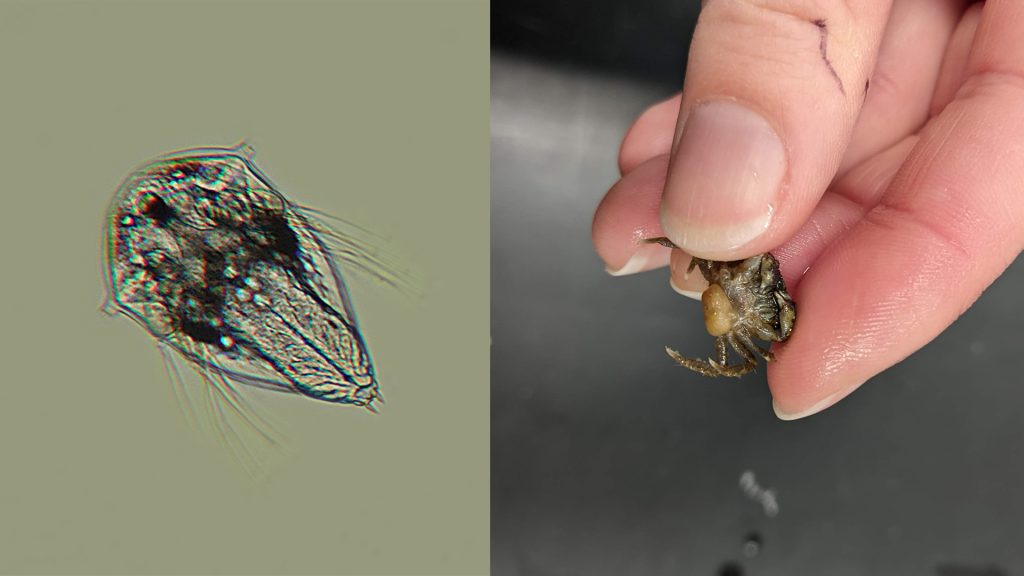
Body snatchers are on the hunt for mud crabs
WHOI biologist Carolyn Tepolt discusses the biological arms race between a parasite and its host
Estimated reading time: 3 minutes
“From the depths of the sea a tidal wave of terror!” reads the Attack of the Crab Monsters movie poster in associate scientist Dr. Carolyn Tepolt’s office. It’s a tongue-in-cheek tribute to one of nature’s most jarring truths: real-life monsters do exist—some are just smaller than you think!
Tepolt studies the thumbnail-sized mud crab, and the body-snatching parasite, Loxo, Loxothylacus panopaei. Loxo worms into the crab’s body, spreading its tissue throughout the host, sometimes extending into the very tips of its legs. In this tissue lies the complete authority over the mud crab’s future. Dissect a zombified mud crab, and the parasite and host are undifferentiated, grown intricately together. The mud crab may never live the same way again.
Tepolt uses parasitism as one model of how organisms quickly respond and evolve in the face of novel environmental conditions. Insidious as it is elegant, this biological arms race between species is just one way that researchers like Tepolt can study rapid adaptation—she also tracks how invasive crabs, such as the European green crab, have genetically adapted as they’ve proliferated across new coastlines.
I sat down with her to learn what makes the relationship between Loxo and mud crabs such an interesting and informative case study in marine ecology.
How does Loxo invade mud crabs?
The parasite is a larval barnacle that finds a newly molted, soft and vulnerable, mud crab and injects its tissue. This tissue wriggles around and finds the central nervous system and then invades internal organs. Usually, the crab develops a sac, which a male parasite fertilizes.
The crabs will take care of the parasite sac as if it were a crab sac with maternal behaviors. All of the energy the crab would have put towards its own reproduction goes to the other reproductive efforts focused on the barnacle babies. These are also morphological changes—even the males that are infected will take care of the parasites—but over time they will appear more and more female, until you can no longer tell the difference. This type of hormonal interference is likely one of the side effects of the hijacking.

(Left) A larva of the parasitic barnacle Loxothylacus panopaei under a microscope. (Right) A barnacle grows on a mud crabs brood pouch. (Photos courtesy of Carolyn Tepolt, © Woods Hole Oceanographic Institution)
Is there something adaptive happening here with Loxo and the mud crab?
I am interested in evolutionary biology at small scales and on fast time frames; for instance, how invasive species deal with new conditions. But the other side of that is how a native species responds to a change in its biological environment, such as the introduction of a parasite.
The crab and the parasite are both native to the Gulf Coast but were found in the Chesapeake Bay. At first, people thought it was going to be too cold for the parasite to survive, but then it spread to an isolated population up in Long Island, New York.
We exposed crabs from different populations to Loxo to see whether their exposure histories affected their susceptibility to infection. We found that native populations, or crabs that had never been exposed to the parasite before, were especially susceptible to infection.
It seems that when the crab and parasite evolved with each other, the parasite population returned to a sort of equilibrium. If the parasite castrates most of its hosts, the next population is going to be really affected, so you want some of the hosts to be resistant.
Crabs who may have been exposed to Loxo may be able to stay away from it in the future. This is why vaccines work—our bodies can recognize things and have an immune response. While crabs don’t have an immune system, they may have a low-level ability to use early exposure to influence how they deal with future exposures.
But how did this Gulf Coast parasite find its way into the Chesapeake Bay and Long Island?
The parasite didn’t ooze up the coast to the Chesapeake—we are pretty confident that it came along with the transplants of oysters. A couple of big diseases in the 1950s knocked down the oyster population. As people tried to rehabilitate the population and move things around, oysters carrying infected crabs introduced the parasite into the Chesapeake. There was another jump to Long Island, which may also have been a side effect of oyster rehabilitation.
The lesson is to pay attention to what else is moving, especially with this overlooked aspect of biodiversity, as evidenced by the fact that when we were doing this work, a summer student discovered another type of parasite, a marine isopod, also infecting the mud crab.


